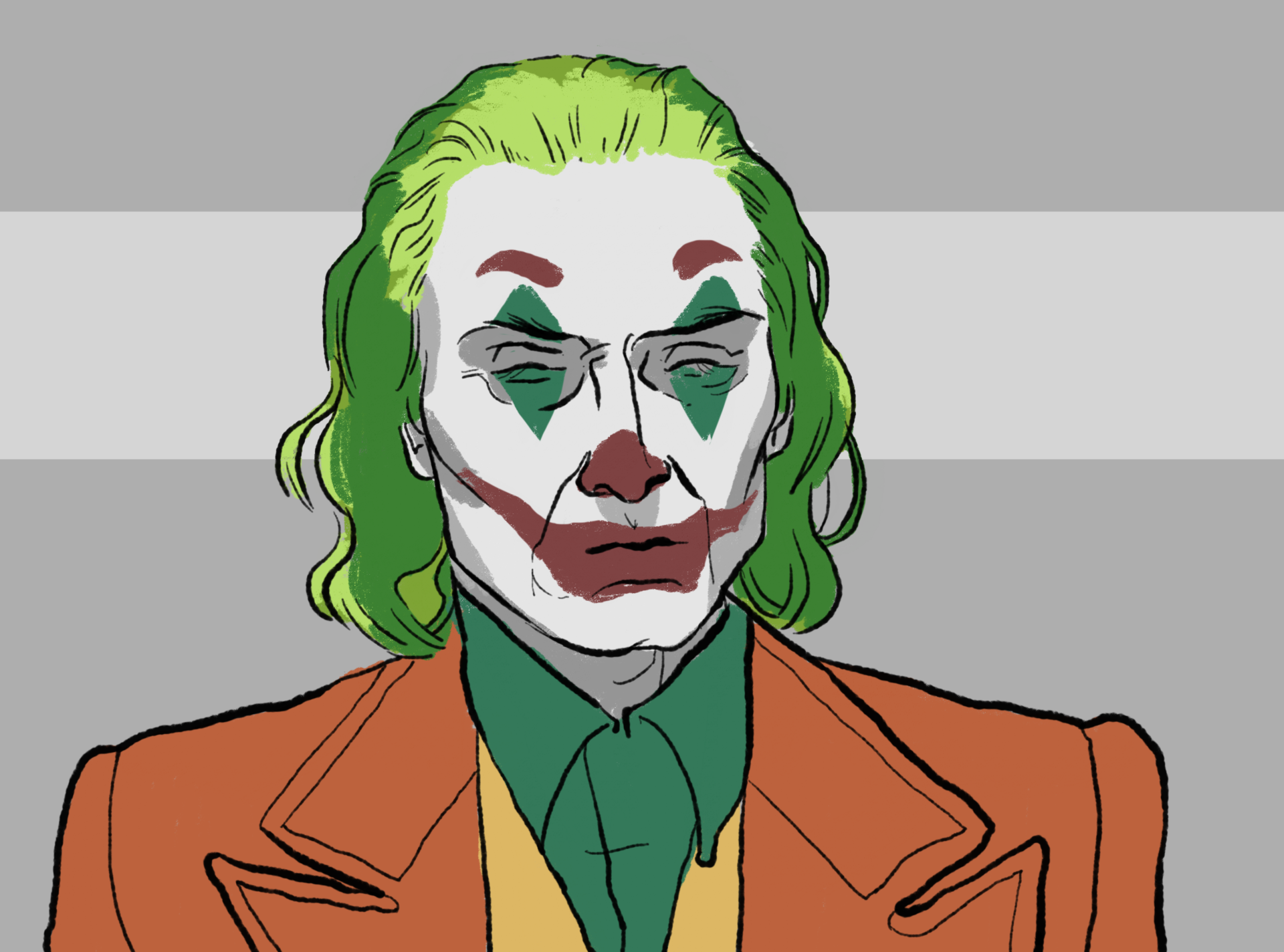
Todd Phillips’ “Joker” has sparked significant controversy with accusations of promoting violence, encouraging incel (involuntararily celibate) uprisings and spurring mass shooting scares. The United States Department of Army even released a memo warning soldiers and family to be on guard for mass shootings accompanying the Oct. 4 release of the movie.
Joaquin Phoenix’s Authur Fleck, Joker’s alter ego, is a mentally-ill pariah. He is beaten in the streets by kids, fired from his job and scorned by a stranger for making a kid smile. He does not mean anyone harm, and he cannot seem to catch a break. In this way, we are meant to sympathize and, possibly, relate to him.
“Joker” operates in artificially assembled discomfort. Fleck dances a lot without consistency of tone or reason. Along with dancing, Fleck’s thumbs find their way into his own and Bruce Wayne’s mouth to stretch them into a smile. These scenes imply importance and deeper meaning, however, neither are explained or end up delivering more than a carnival freak show.
Fleck’s illness seems to stem from trauma faced as a child. His illness is severe, but vague. Rather than develop Fleck’s character, the extent of Fleck’s illness is the focus of development throughout the movie. This film supports the idea that mental illness is an identity that can stand alone. The developments only occur when the plot needs them too, making his illness feel more like a gimmick. He resembles less of a character and more of a caricature of mental illness.
Part of this comes from dialogue and writing that feels cliche and lazy. Lines like, “I stopped taking my medication I feel a lot better now” and “I used to think that my life was a tragedy but now I realize it’s a f*cking comedy” litter the movie. Fleck’s boss delivering bad news as the audio fades out with a jump cut to Fleck taking his aggression out is another example of boring and overused writing that hurts the movie.
This lack of originality infects more than just the dialogue and writing, as it borrows thematic material from other popular works. “Joker” borrows from Martin Scorscese’s “Taxi Driver” with its neo-noir style and focus on a person rejected by society that in “Joker’s” case literally walks down a staircase into madness. Along with “Taxi Driver,” “Joker” seems to borrow from David Fincher’s “Fight Club” scene in which Tyler Durden, Brad Pitt, is revealed to be a figment of The Narrator’s, Edward Norton, imagination and repurposed for a fantasy relationship.
However, while “Taxi Driver” offers social commentary through the character of Travis Bickle’s observations of topical degeneracy that swarmed New York City during its era, “Joker” is sober to this act. In “Taxi Driver,” we see critiques of political inability, acceptance of violence and the effects of consumerism. In “Joker” we observe a shallow, unvetted attack on the wealthy. Gotham is portrayed as degenerate with, again, little explanation. Phillips provides a substance-free mimic of art that offers a Communion Wafer in terms of artistic endeavor.
Fleck preaches that society lacks empathy while he himself lives a life of little empathy demonstrated by him stalking his neighbor, violating Bruce Wayne and murdering people. While some of his actions are in response to attacks he still actively contributes to what he hates, making his disgust with society’s acceptance of it seem unwarranted and phony.
Phoenix was truly robbed by Phillip’s movie because his acting is phenomenal. However, strong acting alone is not enough to save a movie with a plot as juvenile and contrived as “Joker.”
Subscribe to the Mossy Log Newsletter
Stay up to date with the goings-on at Lewis & Clark! Get the top stories or your favorite section delivered to your inbox whenever we release a new issue.

Leave a Reply